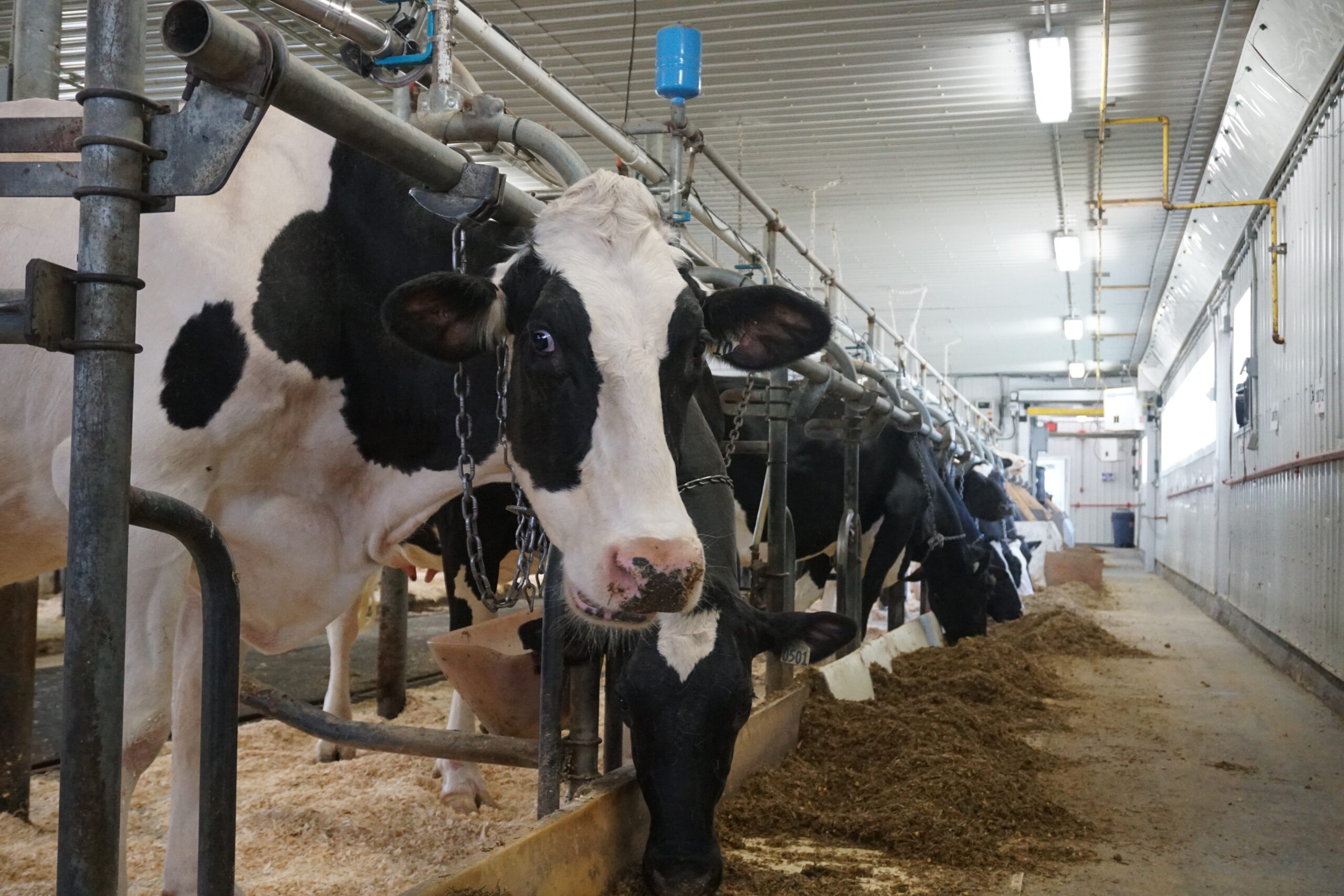Prevention of Ruminal Acidosis in Cows

Project entitled:
Could the fatty acid profile of milk help us detect and prevent ruminal acidosis in cows ?
Stéphanie Claveau, Débora Santschi, Rachel Gervais, Éric PaquetHighlights
- Changes in milk production per cow over the last decades is partly due to an increase of feed concentrates in rations, but this increase could also be at the root of a metabolic disease found in dairy herds, namely sub-acute ruminal acidosis.
- This disease costs the North American dairy industry between US$500 million and US$1 billion per year, or US$1.12 (CA$1.44) per sick cow per day on average.
- The link between the fatty acids (FA) in milk and rumen health has been demonstrated, but the analyses used to establish this link cannot be used in fieldwork due to their prohibitive costs and the time required to perform them.
- Thanks to advances in infrared (IR) spectroscopy, we can now determine the FA profile of a milk sample in just a few seconds and at a fraction of the cost of analyses that use gas-phase chromatography (GC).
- If the results obtained are conclusive, the acidosis test could be part of Lactanet’s offer and allow farmers to quickly and inexpensively obtain an overall picture of the risk of sub-acute ruminal acidosis in their herd.
- For Lactanet, this would be an effective way to valorize the analysis while making maximizing the information that can be derived from the milk samples during milk recordings.
Objectives
The main objective is to develop methods of detec- ting and preventing sub-acute ruminal acidosis in dairy herds. The project will respond to two specific objectives:
1) Develop a method of detecting sub-acute ruminal acidosis based on the FA profile of milk through IR spectroscopy using rumen pH readers. This will make it possible to establish links between the FA profiles of milk and rumen pH;
2) Determine the causes of sub-acute ruminal acido- sis encountered throughout the project to better prevent the development of this metabolic disease in dairy herds.
Results and potential benefits
Currently, there is no simple and effective method of detecting acidosis in commercial dairy herds. The project took place on 12 commercial farms in the Lac St Jean region and allowed us to collect data to develop a method of detecting the disease. As part of the project, the FA profiles of milk samples from lactating cows over 1,000 days were analyzed, for a total of nearly 3,000 samples (two milkings per day and a composite sample of these two milkings). IR analyses were performed in Lactanet’s laboratories, and the method is in the process of being validated through gas chromatography (GC) completed in Université Laval’s laboratories.
The project will result in improved technical and economic performance on dairy farms as a decrease in the adverse effects of sub-acute ruminal acidosis combined with improved feed efficiency will serve to valorize feed. Consequently, improved feed efficiency would result in increased milk production and its components and therefore in increased revenues. Sub-acute ruminal acidosis can lead to other health problems that can require veterinary interventions and the use of medications, which then increases the cost of production and negatively affects the cows’ well-being. Socially speaking, this project is perfectly aligned with the Dairy Farmers of Canada’s “proAction” initiative that was launched in 2013, which focuses on cow comfort and well-being and highlights the importance of considering feed management to ensure their health and well-being. Environmentally speaking, reducing the incidence of sub-acute ruminal acidosis would hopefully improve cow longevity, which would reduce the number of replacement cows that must be bred and therefore reduce associated greenhouse gases (GHG) released in the form of enteric methane. Lactanet will make the expected results available as soon as possible at the end of the project to farmers, who will be able to quickly and inexpensively obtain an overall picture of the risk of sub-acute ruminal acidosis in their herd.
Innovative aspects
- Potential for faster detection of acidosis before damage is caused to animal.
- Potential for predicting ruminal pH based on fatty acid profiles determined using IR spectroscopy rather than chromatography, which can be carried out more quickly and at a fraction of the current cost.
Professionals trained
One Master’s student, Félix Huot, is in the process of receiving training at Université Laval’s Department of Animal Science.
For further information
If the results obtained are conclusive, the acidosis test could be part of Lactanet’s offer and become a new tool for monitoring individual cows. The research results will be transferable to dairy farmers in the very short term. Articles will be published in Le producteur de lait québécois, Le Savoir laitier and other popular science publications. Conferences for users will be held and posters will be created (Novalait Forum Techno and Symposium sur les bovins laitiers) in collaboration with our partners at Lactanet.
Financial contributions
Special call for projects in dairy production and dairy processing (2016-2021):
- Natural Sciences and Engineering Research Council of Canada (NSERC)
- Consortium de recherche et d’innovation en bioprocédés industriels du Québec (CRIBIQ)
- Novalait
- 12 dairy farms from Saguenay-Lac-Saint-Jean Region
Total budget: $370,261